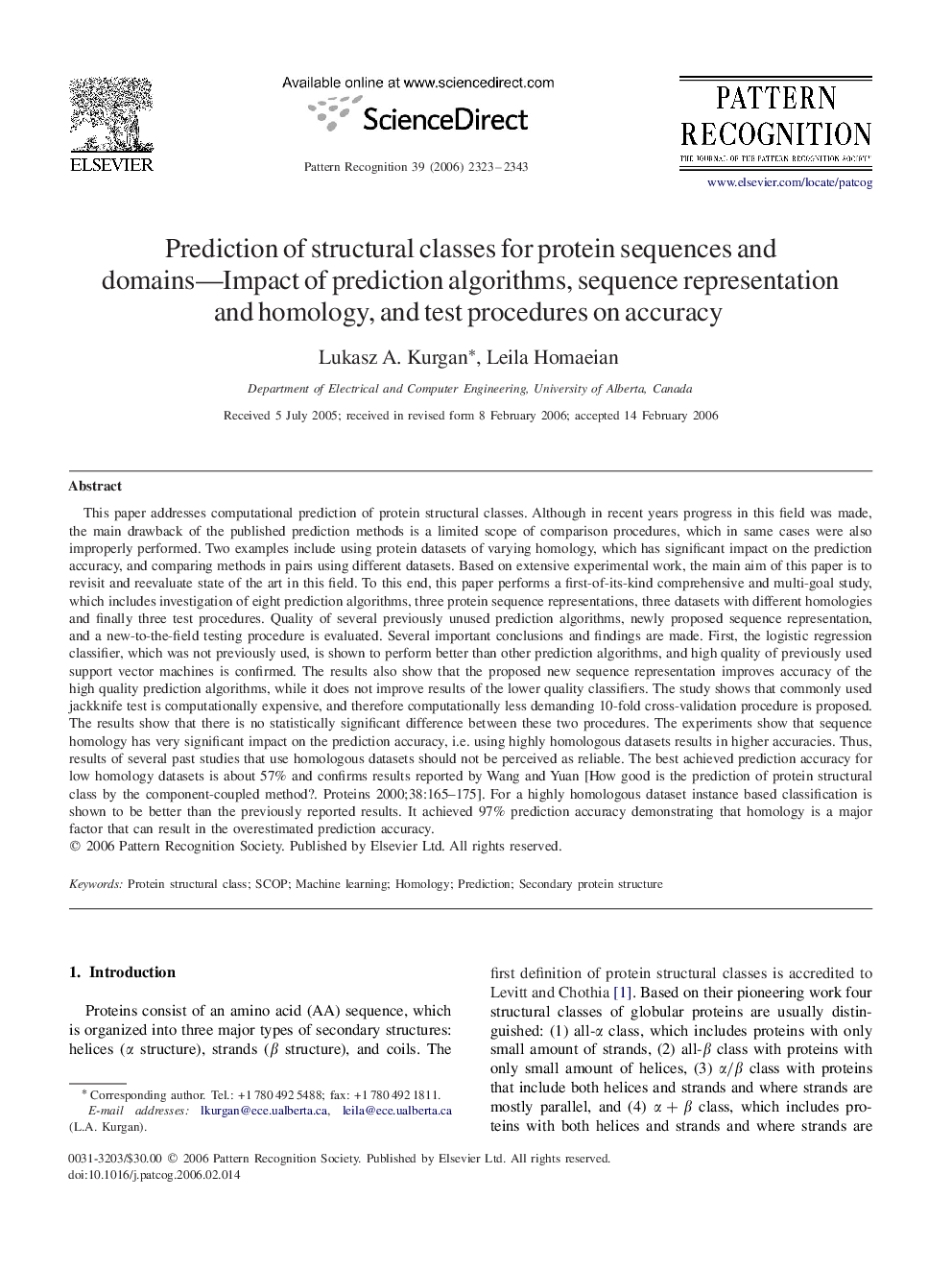| کد مقاله | کد نشریه | سال انتشار | مقاله انگلیسی | نسخه تمام متن |
|---|---|---|---|---|
| 531152 | 869814 | 2006 | 21 صفحه PDF | دانلود رایگان |

This paper addresses computational prediction of protein structural classes. Although in recent years progress in this field was made, the main drawback of the published prediction methods is a limited scope of comparison procedures, which in same cases were also improperly performed. Two examples include using protein datasets of varying homology, which has significant impact on the prediction accuracy, and comparing methods in pairs using different datasets. Based on extensive experimental work, the main aim of this paper is to revisit and reevaluate state of the art in this field. To this end, this paper performs a first-of-its-kind comprehensive and multi-goal study, which includes investigation of eight prediction algorithms, three protein sequence representations, three datasets with different homologies and finally three test procedures. Quality of several previously unused prediction algorithms, newly proposed sequence representation, and a new-to-the-field testing procedure is evaluated. Several important conclusions and findings are made. First, the logistic regression classifier, which was not previously used, is shown to perform better than other prediction algorithms, and high quality of previously used support vector machines is confirmed. The results also show that the proposed new sequence representation improves accuracy of the high quality prediction algorithms, while it does not improve results of the lower quality classifiers. The study shows that commonly used jackknife test is computationally expensive, and therefore computationally less demanding 10-fold cross-validation procedure is proposed. The results show that there is no statistically significant difference between these two procedures. The experiments show that sequence homology has very significant impact on the prediction accuracy, i.e. using highly homologous datasets results in higher accuracies. Thus, results of several past studies that use homologous datasets should not be perceived as reliable. The best achieved prediction accuracy for low homology datasets is about 57% and confirms results reported by Wang and Yuan [How good is the prediction of protein structural class by the component-coupled method?. Proteins 2000;38:165–175]. For a highly homologous dataset instance based classification is shown to be better than the previously reported results. It achieved 97% prediction accuracy demonstrating that homology is a major factor that can result in the overestimated prediction accuracy.
Journal: Pattern Recognition - Volume 39, Issue 12, December 2006, Pages 2323–2343